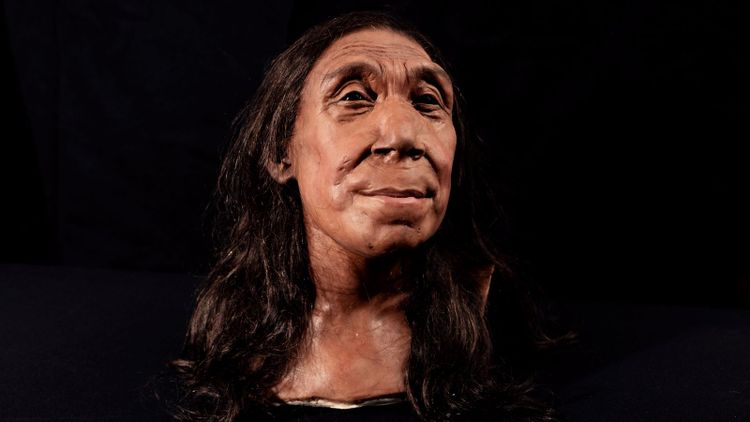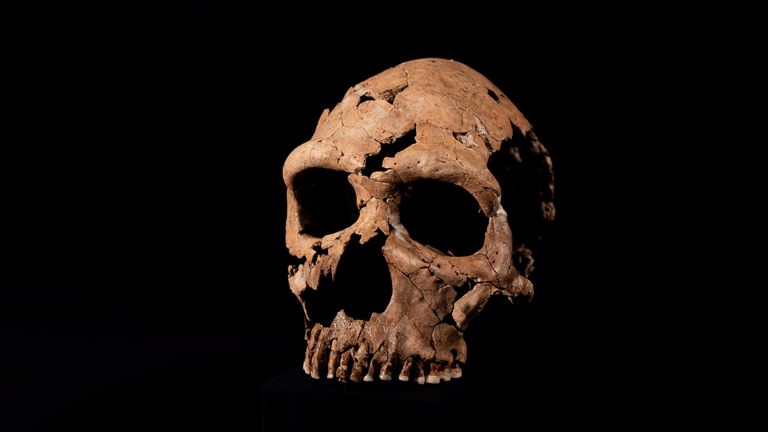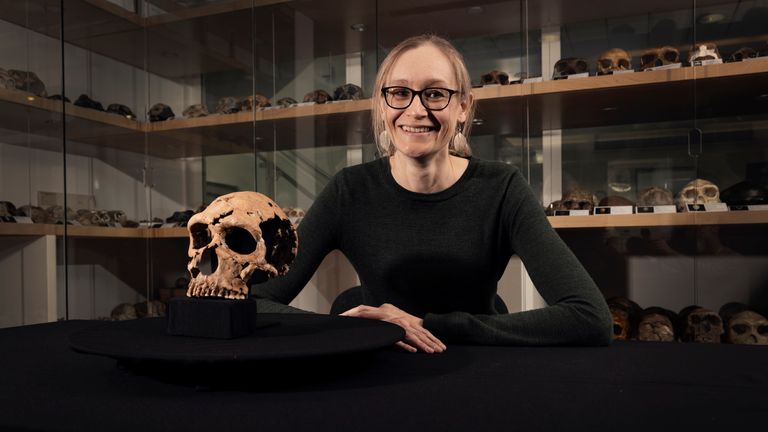Face of 75,000-year-old Neanderthal woman reconstructed

Scientists specializing in the field of archaeology have accomplished the task of reconstructing the cranium of a prehistoric human that lived approximately 75,000 years ago, belonging to the species commonly referred to as Neanderthals.

The scientists from Cambridge University and Liverpool John Moores discovered the skull at the Shanidar Cave location, which is approximately 500 miles away from Baghdad, Iraq.
In a fresh Netflix documentary titled "Secrets of The Neanderthals," experts were able to piece together the skull once more and reconstruct the countenance of the woman to whom it previously belonged.
The cranium was initially discovered back in 2018, having undergone compression to attain a thickness of roughly two centimetres.
The object was smashed, most likely due to falling rocks, just after dying and then compressed even more by sediment over tens of thousands of years.
The remains of an ancient individual have been identified as Shanidar Z by archaeologists.
A challenging 3D puzzle with a lot on the line!
They had to manually assemble over 200 bone pieces to reconstruct the skull.
By analyzing the protein sequences found in the tooth enamel, the researchers were able to deduce that the skeletal remains most probably belonged to a woman.
The state of her teeth helped determine her approximate age, which was believed to be around 45 years old. This was done by analyzing the extent of damage and erosion, with some of her front teeth being worn all the way to the base.
Shanidar Z's body gives the impression that they were a woman, as they are about five feet in height and possess some of the tiniest arm bones amongst Neanderthal remains.
Cambridge's Department of Archaeology's paleoanthropologist, Dr Emma Pomeroy, likened the process of assembling Shanidar Z to a challenging 3D puzzle with considerable risks.

According to her, every piece of the skull is delicately washed and then strengthened with glue and consolidant to secure the bone. This is crucial because the bone can be quite tender, with a texture that reminds one of a biscuit soaked in tea.
It can take two weeks or more to complete the processing of a solitary block.
Scientists discovered signs of pollen and traces of food close to the remains.
The place where they discovered Shanidar Z was also the dwelling of 10 additional Neanderthal remains, which were excavated more than six decades ago.
The bones are encircled by clusters of aged pollen, which scientists believed to be a sign that the deceased were interred with blooms.
On the other hand, research conducted under the guidance of Professor Chris Hunt from Liverpool John Moores University deduced that bees were responsible for the pollen found on the cave floor, presenting a divergent perspective.
More extensive studies conducted after the discovery of Shanidar Z have revealed the presence of burnt food particles in the surrounding earth through the use of microscopic analysis.
Charred remains of seeds, nuts, and grasses from the wilderness propose that Neanderthals didn't only make arrangements and cook food, but they also did it nearby their deceased.
To stay updated on the latest events and breaking news, you can now follow Sky News on WhatsApp. This will enable you to get real-time updates on important stories and events happening around the world right in your WhatsApp feed. It's a convenient and efficient way to stay informed, so don't hesitate to sign up and start receiving your updates today!

Stay on top of the most recent updates from the United Kingdom as well as globally by tracking Sky News.
Dr. Pomeroy reported that Shanidar Z's remains were discovered alongside living individuals who were cooking food over an open flame and consuming it.
The Neanderthals seem to have had a blurred distinction between existence and passing away.
It is noticeable that Neanderthals are revisiting a specific location to inter their deceased.
The time frame can be separated by several decades or even numerous millennia.
Could it be mere chance, or is there a purpose behind their return? If the latter is true, what is motivating them to come back again?
Shanidar Z, being an aged woman, would have possessed a wealth of information for her community. Even today, 75,000 years down the line, we are still gleaning knowledge from her.
You can check out additional reports on Sky News regarding the new ‘audio emoji’ attribute that has seemingly been added by Google. Meanwhile, the ex-CEO of the biggest crypto trading platform globally has been given a prison sentence. Additionally, gadgets that are equipped with feeble passwords will be prohibited in the UK.
It was tough to extract the remains of Shanidar Z as they were extremely fragile.
Experts in the field of archaeology made use of a substance that functions like adhesive to fortify the bones and nearby sediment. This process was crucial before the extraction of Shanidar Z, which was done by wrapping it in little blocks of foil. This was executed underneath a vast stretch measuring about seven and a half meters of both earth and stone.
Later, at the laboratory situated in Cambridge, the scientists performed micro-CT scan of every piece. They then gradually weakened the adhesive and utilized the scans to direct the withdrawal of the bone remains.
After reconstructing the skull, it underwent scanning before being transformed into a 3D-printed model, which served as the foundation for the reconstructed head.
The remodeling process was carried out by globally recognized paleo craftsmen who are also twins, Adrie and Alfons Kennis. They formed artificial muscles and skin layers to construct the visage.















































